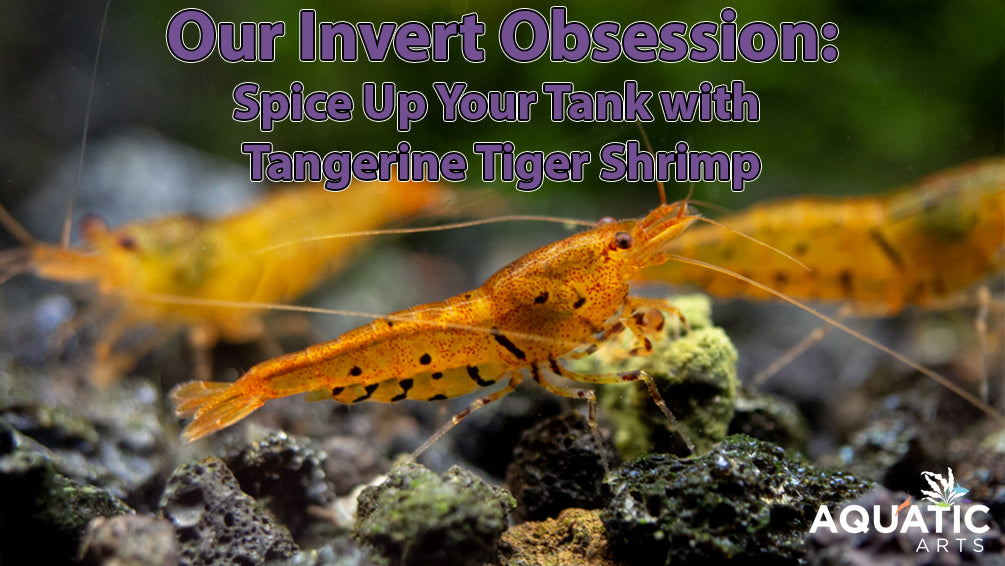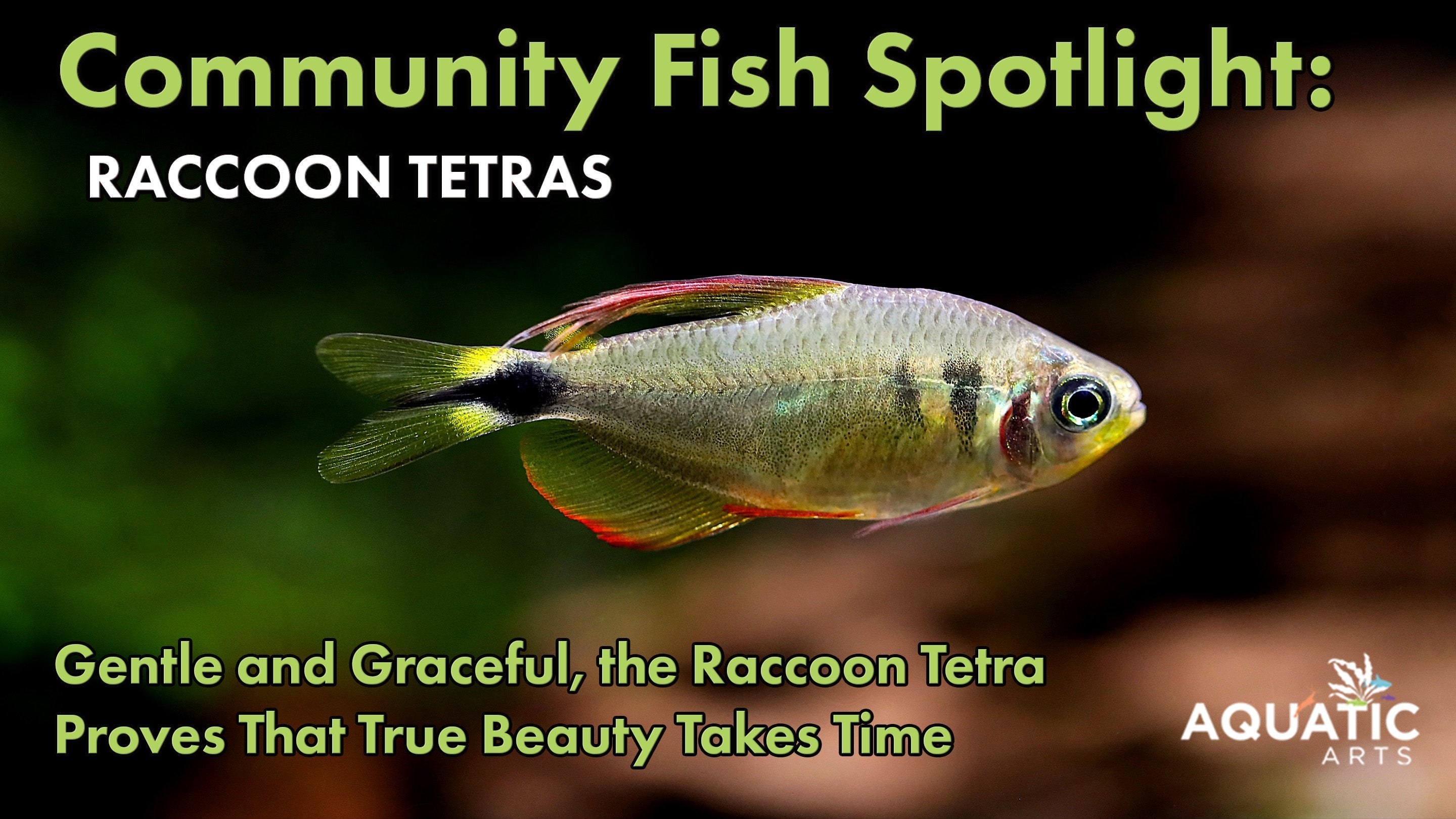Our Invert Obsession: Spice Up Your Tank with Tangerine Tiger Shrimp

Brighten Your Aquarium with These Vibrant, Lively Shrimp
Are you looking to add a vibrant splash of color and personality to your aquarium? Look no further than Tangerine Tiger Shrimp (Caridina serrata)! These little gems bring a dynamic visual appeal that can transform any tank into a mesmerizing underwater paradise. Plus, all our Tangerine Tiger Shrimp are bred right here at our facility in Indianapolis, IN, ensuring top quality and health.
Visual Appeal
Tangerine Tiger Shrimp are known for their stunning bright orange color and striking patterns. Their vivid hue stands out beautifully against a variety of tank backgrounds, making them the perfect addition to liven up your aquarium. Imagine watching these colorful creatures gracefully swim and explore their environment, creating a living work of art in your home.
 Lifespan: Under optimal conditions, Tangerine Tiger Shrimp can live up to 1.5 to 2 years. Providing a stable environment and proper care can help maximize their lifespan.
Lifespan: Under optimal conditions, Tangerine Tiger Shrimp can live up to 1.5 to 2 years. Providing a stable environment and proper care can help maximize their lifespan.
Personality and Behavior
Beyond their visual charm, Tangerine Tiger Shrimp are full of personality. They exhibit quirky and endearing behaviors that make them a joy to watch. From playful swimming patterns to their curious interactions with their surroundings, these shrimp add a sense of liveliness and fascination to any tank. Their peaceful nature ensures they get along well with other tank inhabitants, enhancing the overall harmony of your aquatic community.
Basic Care Requirements
To keep your Tangerine Tiger Shrimp healthy and vibrant, it’s essential to maintain their habitat properly. Here are some key tips:
- Water Conditions: They thrive in well-planted tanks with stable water parameters. Aim for a pH between 6.5 and 7.5, and keep the temperature around 72-78°F.
- Diet: These shrimp love a varied diet. Offer them high-quality shrimp pellets, blanched vegetables, and occasional protein-rich treats like bloodworms to enhance their color and health.
Aquascaping
Creating an optimal environment for Tangerine Tiger Shrimp involves thoughtful aquascaping. Here are some suggestions to enhance their habitat:
- Plants: Live plants are essential for a healthy shrimp tank. Consider adding mosses like Java Moss or Christmas Moss, which provide hiding spots and foraging areas. Anubias and Bucephalandra are also great choices as they attach to hardscape materials and create a natural look. Stem plants like Rotala and Ludwigia add height and movement to the tank.

Filtration and Water Movement: While Tangerine Tiger Shrimp prefer calm waters, a gentle filtration system is essential to maintain water quality. A sponge filter is an excellent choice as it provides biological filtration without creating strong currents that could stress the shrimp.
- Hardscape Materials: Incorporate driftwood and rocks to create a natural environment. Cholla wood and spider wood are excellent choices as they not only look great but also provide surfaces for biofilm growth, which shrimp love to graze on. Use smooth river rocks or dragon stone to build caves and crevices for the shrimp to explore and hide.
- Botanicals: Adding botanicals like Indian almond leaves, alder cones, and banana leaves can enhance the shrimp’s habitat. These botanicals release beneficial tannins and humic substances into the water, mimicking the natural environment and promoting shrimp health.

These natural additions, along with cholla wood, not only enhance the shrimp's vibrant colors but also create a more authentic and healthy habitat, promoting natural behaviors and overall well-being.
Tank Compatibility
When it comes to tank mates, Tangerine Tiger Shrimp are quite adaptable. They coexist peacefully with many other species, making them a versatile choice for community tanks. Consider pairing them with small, non-aggressive fish and other peaceful invertebrates to create a balanced and harmonious environment. Examples of suitable fish include Neon Tetras, Ember Tetras, and Corydoras Catfish. In terms of invertebrates, they do well with species such as Cherry Shrimp (Neocaridina), Amano Shrimp, and various types of snails like Nerite Snails and Mystery Snails. Complementary species like these can add to the diversity and interest of your tank while ensuring a peaceful coexistence.
Breeding Insight
For those interested in breeding, Tangerine Tiger Shrimp offer an exciting opportunity. Males and females are easily distinguishable, and with the right conditions, breeding can be encouraged. To get started, ensure your tank is well-maintained with plenty of hiding spots for the shrimp fry. While breeding can be a rewarding experience, it's important to research and prepare adequately to care for the offspring.
Conclusion
Tangerine Tiger Shrimp are not just a visually stunning addition to your aquarium; they also bring unique behaviors and a peaceful presence that can transform your tank into a vibrant underwater haven. Whether you’re a seasoned aquarist or just starting out, these shrimp offer a delightful and rewarding experience. Plus, knowing that all our Tangerine Tiger Shrimp are bred at our facility in Indianapolis, IN, you can be confident in their quality and health.
So why wait? Spice up your tank today with the captivating charm of Tangerine Tiger Shrimp and enjoy the colorful, lively spectacle they bring to your aquatic world.
Q&A: Popular Questions About Tangerine Tiger Shrimp
Q: Can Tangerine Tiger Shrimp change color?
A: Yes, Tangerine Tiger Shrimp can sometimes change color slightly based on their environment, diet, and overall health. Stress, water parameters, and the presence of natural pigments in their diet can influence their coloration.
Q: How often should I feed Tangerine Tiger Shrimp?
A: Tangerine Tiger Shrimp should be fed small amounts once a day. Overfeeding can lead to poor water quality, so it’s important to remove any uneaten food after a few hours. A varied diet helps ensure they receive all necessary nutrients.
Q: What is the ideal substrate for Tangerine Tiger Shrimp?
A: A dark, fine-grained substrate like aquarium soil or sand is ideal for Tangerine Tiger Shrimp. Darker substrates enhance their vibrant orange color and provide a natural environment that encourages natural behaviors.
Q: How do you acclimate Tangerine Tiger Shrimp to a new tank?
A: Acclimating Tangerine Tiger Shrimp to a new tank should be done slowly to prevent shock. Use the drip acclimation method over a period of 30 minutes to an hour, gradually mixing tank water with the water they came in to help them adjust to new water parameters.
Q: What are common signs of stress in Tangerine Tiger Shrimp?
A: Common signs of stress include excessive hiding, loss of color, inactivity, and erratic swimming. Monitoring these behaviors can help you identify and address any issues with water quality or tank conditions early.
Q: Can Tangerine Tiger Shrimp be kept with other shrimp species?
A: Yes, Tangerine Tiger Shrimp can be kept with other non-aggressive shrimp species such as Cherry Shrimp or Amano Shrimp. However, it’s important to ensure that the tank conditions meet the needs of all species involved and to monitor for any signs of inter-species aggression or competition for resources.




